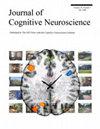婴儿大脑中的社交感知及其与社交行为的联系。
IF 3.1
3区 医学
Q2 NEUROSCIENCES
引用次数: 0
摘要
目前的纵向研究(n = 98)采用了发育认知神经科学的方法来研究社会感知的可变性是否以及如何与人类早期发育中的社会行为相关联。研究使用功能性近红外光谱对 7 个月大时处理动态人脸的皮层反应进行了调查。在 18 个月时,使用幼儿行为问卷测量了社交能力的个体差异。功能性近红外光谱分析结果表明,7 个月大的婴儿在观看不断变化的人脸时,颞叶上皮层会被调动,这证实了之前在婴儿和成人身上进行的研究结果,也进一步说明了这一大脑系统在婴儿出生早期就专门用于社会感知。我们的纵向研究结果表明,7 个月大婴儿右侧颞上皮层的参与程度越高,预示着 18 个月大婴儿的社交能力越强。这表明,早期社交感知的变异与后来公开展示的社交行为的差异有关,为社交脑行为关联提供了新的纵向证据。本文章由计算机程序翻译,如有差异,请以英文原文为准。
Social Perception in the Infant Brain and Its Link to Social Behavior
The current longitudinal study (n = 98) utilized a developmental cognitive neuroscience approach to examine whether and how variability in social perception is linked to social behavior in early human development. Cortical responses to processing dynamic faces were investigated using functional near-infrared spectroscopy at 7 months. Individual differences in sociability were measured using the Early Childhood Behavior Questionnaire at 18 months. Confirming previous work with infants and adults, functional near-infrared spectroscopy results show that viewing changing faces recruited superior temporal cortices in 7-month-old infants, adding to the view that this brain system is specialized in social perception from early in ontogeny. Our longitudinal results show that greater engagement of the right superior temporal cortex at 7 months predicts higher levels of sociability at 18 months. This suggests that early variability in social perception is linked to later differences in overtly displayed social behavior, providing novel longitudinal evidence for a social brain–behavior association.
求助全文
通过发布文献求助,成功后即可免费获取论文全文。
去求助
来源期刊
CiteScore
5.30
自引率
3.10%
发文量
151
审稿时长
3-8 weeks
期刊介绍:
Journal of Cognitive Neuroscience investigates brain–behavior interaction and promotes lively interchange among the mind sciences.

 求助内容:
求助内容: 应助结果提醒方式:
应助结果提醒方式:


